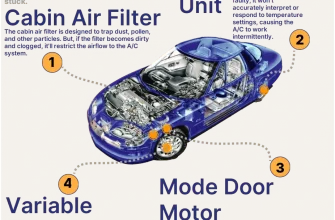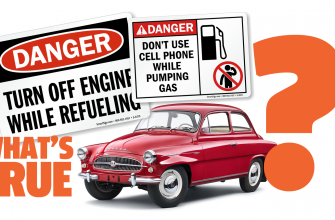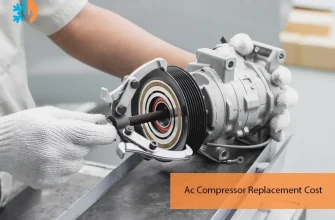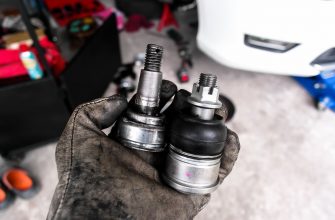In the intricate world of automotive engineering‚ transmissions play a pivotal role in determining a vehicle’s performance‚ efficiency‚ and driving experience․ At the heart of an automatic transmission lies a component that often goes unnoticed but is crucial for its operation: the valve body․ This article will delve into the significance of valve bodies‚ their function‚ and the impact they have on transmission performance․
What is a Valve Body?
The valve body is essentially the control center of an automatic transmission․ It is a complex assembly of channels‚ valves‚ and solenoids that directs hydraulic fluid to the various clutches and bands that engage and disengage gears․ Without a properly functioning valve body‚ the transmission cannot perform its job effectively‚ leading to a cascade of issues ranging from poor shifting to complete transmission failure․
The Anatomy of a Valve Body
A valve body consists of several key components:
- Valves: These are mechanical devices that open and close to control the flow of hydraulic fluid․
- Passages: Channels through which hydraulic fluid flows‚ connecting various components of the transmission․
- Solenoids: Electrically controlled valves that help regulate fluid pressure and flow based on the vehicle’s speed and load․
- Oil Pump: Supplies hydraulic fluid to the valve body under pressure‚ essential for its operation․
How Valve Bodies Work
The operation of a valve body is a symphony of hydraulic and electronic controls․ When the driver accelerates‚ the transmission control module (TCM) receives input from various sensors․ Based on this data‚ the TCM determines when to shift gears․ It sends signals to the solenoids in the valve body‚ which in turn open or close the valves to direct hydraulic fluid to the appropriate clutches and bands․
This process allows for smooth and precise shifting‚ optimizing the vehicle’s performance․ The valve body must respond quickly to changes in speed and load‚ making it critical for both efficiency and drivability․
Common Issues with Valve Bodies
Like any mechanical component‚ valve bodies can experience problems․ Common issues include:
- Fluid Leaks: Can result in low hydraulic pressure‚ leading to erratic shifting․
- Sticking Valves: Debris or wear can cause valves to stick‚ resulting in delayed or harsh shifts․
- Solenoid Failure: Malfunctioning solenoids can disrupt the flow of fluid‚ affecting gear changes․
Maintenance and Replacement
Regular maintenance is essential to ensure the longevity of the valve body and the transmission as a whole․ This includes:
- Regular fluid changes to prevent contamination․
- Monitoring transmission performance for signs of issues․
- Addressing leaks and other problems promptly․
In some cases‚ a valve body may need to be replaced․ This is often due to severe wear or damage that cannot be repaired․ Replacing a valve body can restore proper function and improve the overall performance of the transmission․
Understanding the role of valve bodies in automotive transmissions is crucial for both enthusiasts and everyday drivers․ These components are integral to the smooth operation of vehicles‚ affecting everything from fuel efficiency to driving comfort․ By recognizing the importance of valve bodies and maintaining them properly‚ drivers can ensure their transmissions operate at peak performance‚ prolonging the life of their vehicles․
Next time you shift gears‚ take a moment to appreciate the complex engineering behind it — especially the unsung hero‚ the valve body․
The Evolution of Valve Bodies
The design and functionality of valve bodies have evolved significantly over the years․ Early automatic transmissions featured simplistic valve bodies that relied on mechanical linkages and purely hydraulic controls․ However‚ as automotive technology advanced‚ so did the complexity of transmission systems․ Today’s valve bodies integrate electronic components‚ allowing for more precise control over shifting patterns and improved responsiveness․
Modern valve bodies often utilize modular designs‚ enabling easier repairs and replacements․ This adaptability is essential in an era where manufacturers aim to boost fuel efficiency while meeting stringent emissions regulations․ Advanced valve body designs can also include adaptive transmission systems that learn a driver’s habits‚ further enhancing performance and comfort․
Aftermarket Modifications
For automotive enthusiasts and performance-minded drivers‚ aftermarket modifications to valve bodies can offer significant benefits․ Upgrading to high-performance valve bodies can result in quicker shifts‚ increased torque capacity‚ and enhanced overall transmission responsiveness․ These modifications are particularly popular in motorsports and among those looking to extract maximum performance from their vehicles․
However‚ it’s crucial to approach these modifications with caution․ Improper installation or incompatibility with the existing transmission can lead to more severe issues down the line․ It’s always advisable to seek professional guidance when considering valve body upgrades or replacements․
The Future of Valve Body Technology
As we move further into the age of automation and electric vehicles‚ the role of valve bodies may evolve even more․ With advancements in artificial intelligence and machine learning‚ future transmissions might utilize predictive algorithms to optimize shifting patterns based on driving conditions‚ leading to even more seamless transitions between gears․
Additionally‚ the rise of hybrid and fully electric vehicles introduces new challenges and opportunities for valve body design․ Engineers are exploring how to integrate traditional hydraulic systems with electric drive systems‚ potentially leading to innovative hybrid solutions that enhance performance while maintaining energy efficiency․









Excellent insights on the mechanics behind automatic transmissions! The flow of hydraulic fluid and its impact on shifting was particularly fascinating.
This article does a fantastic job of explaining the importance of valve bodies in automatic transmissions. I learned so much about how they work!
What an informative piece! The explanation of the relationship between valves, passages, and solenoids was clear and easy to understand.
I never realized how complex valve bodies are! The detailed breakdown of their components was very enlightening. Great read!
I appreciate how this article highlights the critical role of valve bodies in transmission performance. It’s a must-read for any car enthusiast!
This article opened my eyes to the intricacies of automotive engineering. The explanation about the TCM